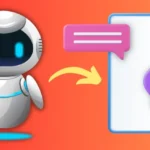Insights from Data Using Excel
Analyze your data with tools like filters and PivotTables, and use business and personal case studies to help you figure out what’s going on.
What you’ll learn
Insights from Data Using Excel
- When there is a question or a problem with any data file, look for hidden clues in it.
- Make sense of your data by putting it together from different files.
- It’s important to design and use a PivotTable to answer a question, whether it’s numerical or whether it’s true/false.
- It’s easy to sort and filter your data based on a number of different things.
- The VLOOKUP function can be used in both forms, for example, to merge data or turn numerical values into pre-defined groups.
- Calculate an entire column with a simple formula and then do it again.
Requirements
-
Excel knowledge is not required. In this case, you’re good to go.
Description
Insights from Data with Excel gives you the best ways to slice and dice your data until the insights come right out. First, you’ll organize the data so that it’s easy and flexible to find answers quickly and quickly. We will show you how to fix your data if it’s not in the right order or has extra information. Sort and filter your data right away to start looking at it. PivotTables combine all of the data.
It’s easy to sum it up by one thing, then quickly try another. Find out what is making the outcome happen. Find the 20% that gives you the most value. As you can see in the video, Excel is very simple. The hard part comes when you apply these seemingly simple techniques to real-life problems, which makes them more difficult. Consequently, most of the time you’ll spend in this class will be hands-on. You’ll do case studies of personal and business problems.
Excel is all you need. Make a list or add up a column of numbers, and you’re good to go. You don’t need the most up-to-date version. When you use Excel, you can use powerful tools that have been around for a while. Any platform will work, too. In order to show it, I’m using a Mac and giving full Windows instructions, but you’ll see that it’s the same on both.
be able to:
- Merge two or more different types of data files into one file
- Put your data in a way that makes it easy to look at.
- Based on numerical and category values, you can arrange your data in a way that makes sense to you
- Filter your data based on different things.
- To make a quick summary of the data, use PivotTables to make a table of the data.
- In order to answer a specific question, you should make a PivotTable.
- Use a PivotTable to “slice and dice” the data in different ways to get more information.
- Use a PivotTable to look at an issue where the answer is “yes” or “no.”
- Effectively use the different PivotTable options for “summarized by,” such as:
- Find a group that is most likely to have some kind of characteristic (data mining)
- When you look at the data, put it in groups so you can see how it all fits together (prepare for clustering)
- VLOOKUP can be used to make a single data table by pulling data from another table.
- numerical or categorical forms of each column should be chosen to help you answer your questions the best.
- Using Replace, you can change categorical values into numerical ones.
- VLOOKUP or grouping can be used to turn numerical values into categorical ones.
- A simple formula is what you need to do to write this.
- Make a copy of a single formula for the whole column.
- Find out what you can learn from any data file that you have a question about or a problem with
Insights from Data Using Excel
Sometimes you have too much data, overwhelming columns of numbers and categories with no clear order or meaning. The answers may be in there somewhere, but how do you draw them out? That’s the focus of this class. You will get the most out of the class if you have or can get data and if you have questions to answer or decisions to make. Keep it in mind as you work through the tools.Excel is not a spectator sport. You’ll have many opportunities to practice what you’re learning. You’ll often be asked to “try it” to solidify the techniques you’re learning. Most of all, you’ll be given case studies to explore—a data file and an often-vague issue. Your challenge is to discover what you can in the data to help shed some light on the issue. There are multiple possible answers. What you learn may raise further questions. There may be different approaches to the problem. This is key to learning the essential skill of turning data into answers.
Decisive People: Excel for Using
Are you able to make decisions? A business, or maybe with your family and friends, or even just for yourself? If so, you want to know. Your time is very important. You don’t want to learn Excel, but that’s not what you want to do. It is important to you that you learn how to get actionable ideas from the data you have. The questions are always different. Every answer brings up more questions. You need to look at the data. You need to be able to change. Microsoft Excel gives you the flexibility and transparency that you need.
Why does a person who makes decisions need to learn about Excel? People think Excel is for “bean counters” and “number crunchers,” but that’s not true at all. It looks like it’s all about making graphs and static reports that look good. But you don’t do the same thing over and over, and you want more than just pretty things. Excel is the tool you need to be able to explore and find out what you need to know.
People don’t like how Excel has a lot of extra features. It’s not possible for anyone to be an expert in all of them at the same time. If you buy a typical Excel book, it will be over 1000 pages long. Even then, it only talks about how to use Excel. If you read this, it doesn’t tell you how you can use Excel to solve your problems.
Insights from Data Using Excel
If you like, you don’t have to learn all these things. There are a few things that will help you answer the questions you need to answer, like Find out what they can do, and forget the rest.
The key is to find the few magic techniques that work for you and your specific problems. They all start with a big problem that needs to be solved, and they show how to use a lot of different Excel tools. There are ways to reorganize your data, focus on the most important things, summarize in different ways, and look for sweet spots and weird places. It doesn’t have any cute graphics, and there isn’t any “fluff.”
From your teacher:
There are spreadsheets that I’ve used to answer questions for more than 30 years. During my time as a mission analyst at Hughes Electronics and other companies, I used it to predict how things would go and compare different options. The applications were very broad and vague. They could protect Europe from missile attacks, stop drug smuggling, and more. Excel’s flexibility made it easy for me to try different scenarios, find tipping points, find key drivers, and find the best way to solve a problem.
I’ve tried a lot of different database programs, but they always can’t answer the questions I ask them about. Excel is the tool I always go back to. I use it for everything from simple lists to tracking doctor visits to complex retirement planning.
A lot of managers have taken technical classes from me for 20 years through a lot of big universities. I use Excel in these classes to show how the techniques work. The students already have Excel on their computers and are already familiar with it, so they can start right away with hands-on explorations of the complex techniques being taught in the class right away. In this case, they don’t have to learn R or Python to start working with data science algorithms. This is a list of some of the classes where Excel was used very often.
Insights from Data Using Excel
- Caltech’s Center for Technology and Management Education is a place where people can learn about predictive analytics and how to use them.
- At the Caltech Center for Technology and Management Education, they teach Lean Six Sigma.
- People who study systems engineering at UCLA Extension work for Raytheon.
- In this UCLA program, you will learn how to be a decisive manager.
It’s one of the things I like about teaching that I get to talk to the students. I look forward to comments and direct messages, and I try to respond quickly. Any feedback is welcome. It’s important for me to know right away if something isn’t clear or doesn’t work the way it should. As a teacher, I especially want to know what you’ve done with your own data, what you think about the case studies, and what else you want to learn about.
There is a lot of data that you can look at to see what you can learn. Learn how in just a few hours. Sign up right away. First, check out the short video or the free lessons. You should come to class.
Who this course is for:
- Data-rich people who are trying to figure things out
- Busy people who are more interested in getting answers than learning how to use a tool.
Insights from Data Using Excel
Projects in HTML5 Course – Learn HTML5
Download Now









